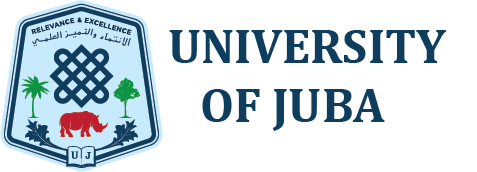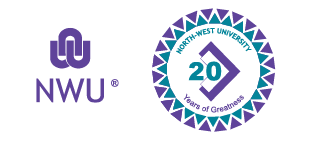Partner institutions in Africa
Partner institutions in Africa
| University | Short description |
|---|---|
Mohamed Khider University of Biskra |
Biskra University is implemented on three campuses. It has 30567 students (103 students from 09 nationalities), 1386 academic staff, and 1010 non-academic staff. It is composed of 6 faculties and sports institute, 26 departments and 36 research laboratories. Also, there are 36 pedagogical laboratories which are divided between faculties. Furthermore, Biskra university is ranked amongst top 10 of National Higher Educational Institutions from 107 universities on the Web-Metrics Ranking of the Universities. The programs are taught in Arabic, French, and English. |
|
First admitted students in 1977. One of the Top leading Academic Institutions in the Country. |
|
University of Cairo |
One of the country’s oldest institutions, the public university was founded in 1908 and has about 230,000 students of whom about 3 per cent are from overseas. Just 2 per cent of staff and 2 per cent of students at Egyptian universities come from outside the country. International students living in Cairo enjoy relatively low living costs and have some of the country’s ancient attractions on their doorstep. |
Felix Houphouet-Boigny University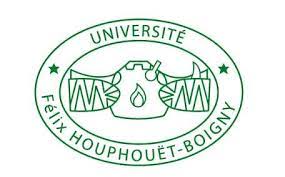 |
Felix Houphouet-Boigny University, located in Côte d'Ivoire, is a renowned institution of higher education. Founded with the aim of providing quality education, it offers a diverse range of academic programs and research opportunities. With a talented faculty and modern facilities, the university strives to create a stimulating learning environment conducive to the personal and intellectual development of students. Guided by high standards of academic excellence, Felix Houphouet-Boigny University nurtures a culture of discovery, innovation, and community development. As a dynamic institution of higher learning, it plays a key role in shaping enlightened leaders and promoting progress both nationally and internationally. The University of The Gambia was established by an Act of the National Assembly of the Gambia in March 1999. The enactment, which was a bold step to fulfill a long-standing desire of the people of The Gambia and to respond to several years of advocacy both within and outside the country for a university, ended years of indecision on the university question. |
University of The Gambia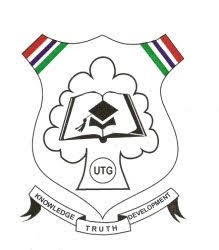 |
The University of The Gambia was established by an Act of the National Assembly of the Gambia in March 1999. The enactment, which was a bold step to fulfill a long-standing desire of the people of The Gambia and to respond to several years of advocacy both within and outside the country for a university, ended years of indecision on the university question. |
University of Ghana (UG) |
The University of Ghana, the premier university in Ghana, was founded as the University College of the Gold Coast by Ordinance on August 11, 1948 for the purpose of providing and promoting university education, learning and research. As a University poised to distinguish itself in the area of research to make an impact at the national and international level.
In addition, the University has several research institutions and centres for learning and research, including Noguchi Memorial Institute for Medical Research (NMIMR), http://www.noguchimedres.org/ Centre for Tropical, Clinical Pharmacology and Therapeutics, Regional Institute for Population Studies http://rips-ug.edu.gh/ Institute for Environmental and Sanitation Studies http://iess.ug.edu.gh/ and the Institute for Statistical, Social and Economic Research. http://isser.edu.gh/ |
Kenyatta University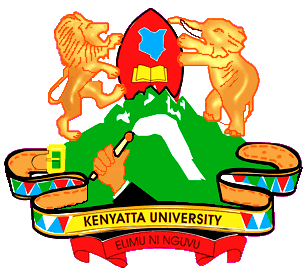 |
Kenyatta University is among the top two largest public university in Kenya as established through an Act of Parliament in 1985 and governed according to the Universities Act 2012 amended. |
Rongo University |
Rongo University can trace its roots back to a technical school founded in the 1970s. It gained its current name and university status in 2011. |
Cadi Ayyad University (UCA) |
Founded in 1978, Cadi Ayyad University today brings together 15 faculties and schools spread over 4 cities (Marrakech, Kelaa des Sraghna, Essaouira and Safi) And covering all the scientific, technical, economic, legal, medical, human and social sciences. |
Hassan I University |
Université Hassan 1er is a a public university located in Morocco. |
Hassan II University of Casablanca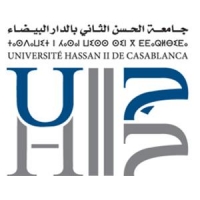 |
Hassan II University of Casablanca (UH2C) is a public university which is the result of a recent merger on 1st September 2014 of two universities: Hassan II University Ain Chock - Casablanca and the Hassan II University Mohammedia – Casablanca. |
Mohammed V University, Rabat |
Mohammed V University in Rabat is a dual-campus university in Morocco’s capital city. It ranks as one of the top 200 universities worldwide in a BRICS country or an emerging economy. |
Université Sidi Mohamed Ben Abdellah (Fés) |
'Founded in 1975, Sidi Mohamed Ben Abdellah is named for a 18th century Sultan of Morocco, the nation in which the university is based. The main campus is located in the northern city of Fez, a World Heritage Site and historically the last stop on the famous gold trading route from Timbuktu. There are active cultural activities taking place at USMBS, and the institution has hosted an annual Theatre Festival since 2005. The university is also dedicated to outreach in the local community, and will often host programmes for the elderly. In 2016 there were two forums held discussing on the subject of energy supply in Morocco, hosting lively and active debate from both outside experts and the student body. USMBA is an active participant of international partnership programme Erasmus Mundus Al-Idrisi, co-ordinating exchange programmes with universities in Europe and North Africa. In 2016, head of Geography at the University of Rennes II, Adeline Cotonnec, met with faculty from USMBA. The two teams discussed a strengthened relationship between the two institutions for research and teaching, and for the introduction of the 2017 TOUBKAL Programme of Scientific Endeavour involving institutions in both France and Morocco. Fields: sciences, low, economic, socila sciences, techology, art, human sciences, medicine, pedagogy, sport |
Universidade Eduardo Mondlane, Maputo |
Eduardo Mondlane University (UEM) is a national public institution, the oldest institution of higher education in Mozambique. It was founded on August 21, 1962. |
Kaduna Business School |
Kaduna Business School (KBS) was established in 2000 to provide an opening for systematic advancement in management, leadership and entrepreneurship. Since its inception, KBS has been instrumental in driving the policies and actions needed to tip the scales in favour of managers and leaders who are eager to learn and improve their chances of success. Management is getting more complex while the real essence of leadership is understood and practiced only by a select few. |
Université Cheikh Anta Diop de Dakar (UCAD) |
Established in 1918, the Université Cheikh Anta Diop (Cheikh Anta Diop University) is a non-profit public higher education institution located in Dakar. Officially recognized by Ministry of Higher Education and Research of Senegal. It is named after the Senegalese physicist, historian and anthropologist Cheikh Anta Diop and has an enrollment of over 60,000. |
University of Dar Es Salaam |
The University of Dar es Salaam is the oldest and biggest public university in Tanzania. It is situated on the western side of the city of Dar es Salaam, occupying 1,625 acres on the observation hill, 13 kilometers from the city centre. It was established on 1st July 1970, through parliament act no. 12 of 1970 and all the enabling legal instruments of the constituent colleges. |
Lomé Business School |
Lomé Business School (LBS) is an international higher education establishment based in Lomé (Togo), with post-baccalaureate training in management and information systems. With training that meets global standards and is adapted to economic and technological changes, LBS is a credible partner of businesses and French Grandes Ecoles. LBS is a school in which talent and passion have their place to innovate, to develop the ability to dare. In addition, the LBS project is based on Diversity, Audacity and Talent which are essential values of future managers. |
University of Lomé |
A multidisciplinary, research-focused, international university |
University of Tunis El Manar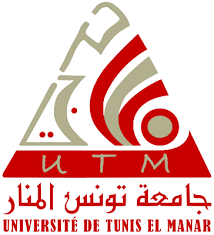 |
The University of Tunis El Manar is a public institution of an administrative nature founded in 1987 under the name of "University of Sciences, Techniques and Medicine of Tunis" It got its current name in 2000. |
|
Core activities, teaching-learning and research, are intertwined with community engagement and innovation in our eight faculties, most of which serve both distance and contact students. |
|
University of Mauritius |
The University of Mauritius is the oldest and biggest university in the country based on student enrolment and academic offerings.. The public university's main campus is located in Réduit, Moka. The university was first officially established by the University of Mauritius Ordinance in December 1965, when it took over the existing school of agriculture. It achieved full university status in 1972. The faculty of agriculture is the oldest faculty in the university, dating back to 1914. Today the faculty operates the University of Mauritius Farm along with a laboratory on 21 acres. Students can also choose to study at its six other faculties: engineering; information, communication and digital technologies; law and management; medicine and health sciences; science; and social sciences and humanities. As well as those faculties, the university also offers a Centre for Innovative Lifelong Learning, a Centre for Information Technology and Systems and a Centre for Biomedical and Biomaterials Research. There is a student's union at the university which acts as a bridge between the students and the faculty. Fields: agriculture, engineering, IT, law, economics, health sciences, science, social sciences, humanities |
Carthage University |
The University of Carthage was founded in 1988 as a sectoral university in Law, Economics and Management. In 2000, it became a multidisciplinary university geographically spread over 5 governorates. It now has 33 higher education institutions including 10 institutions in dual supervision and two research centers and it welcomes approximately 30,000 national and international students annually. Several centers of excellence represent an undeniable strategic asset of the University of Carthage. Indeed, the university offers excellent training in several fields: engineering sciences, human and social sciences, teaching in architecture, Arts and cinema, etc. The University of Carthage is keen to forge its own identity by strengthening the centers of excellence and improving the exchange of experiences and skills between its institutions. Much attention is also paid to student life and the renovation of the training offer, in partnership with the socio-economic world. Supporting the transformation of knowledge into innovation through research also represents a strategic axis. The quality and importance of publications at the University of Carthage clearly illustrate its strong potential in terms of research. In terms of international cooperation, the university has also invested heavily in improving its visibility by strengthening and expanding its cooperation network. In addition to our traditional European and North Maghreb partners, several new agreements have been signed with new partners from Asia, the Middle East, North and Latin America and sub-Saharan Africa. A remarkable increase has been recorded in our participation in international mobility, capacity building and research projects (Erasmus, H2020, bilateral projects, etc.). Fields: economics, law, social sciences, humanities, sciences, engineering, art, IT, environmental, education, natural sciences, agriculture |

